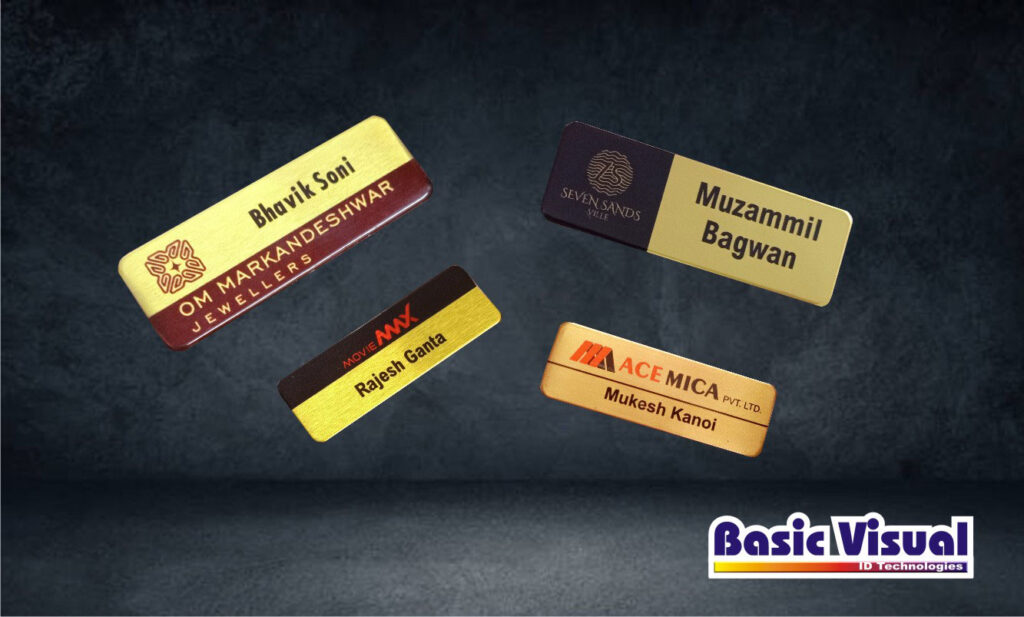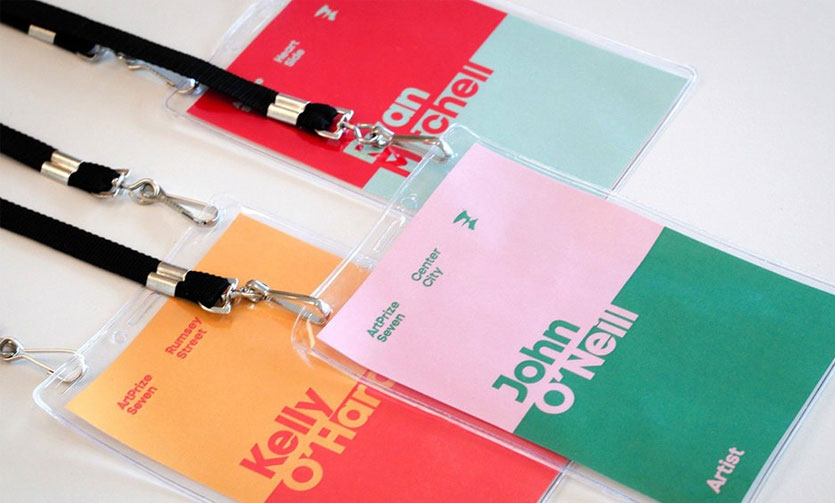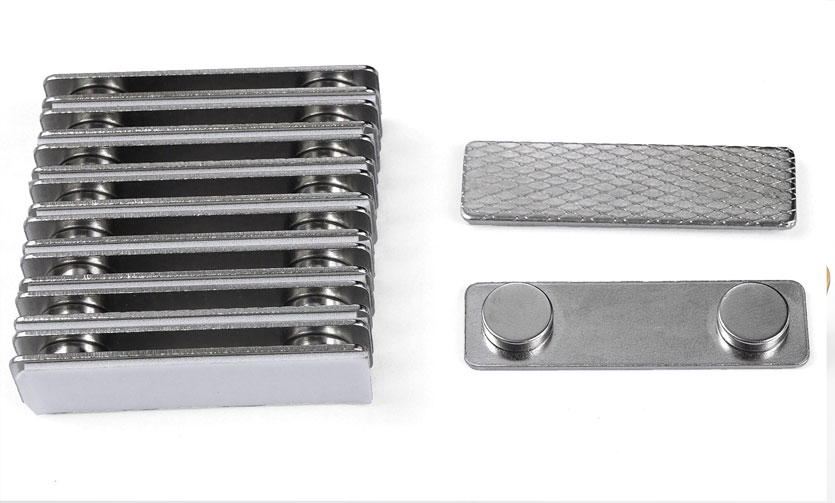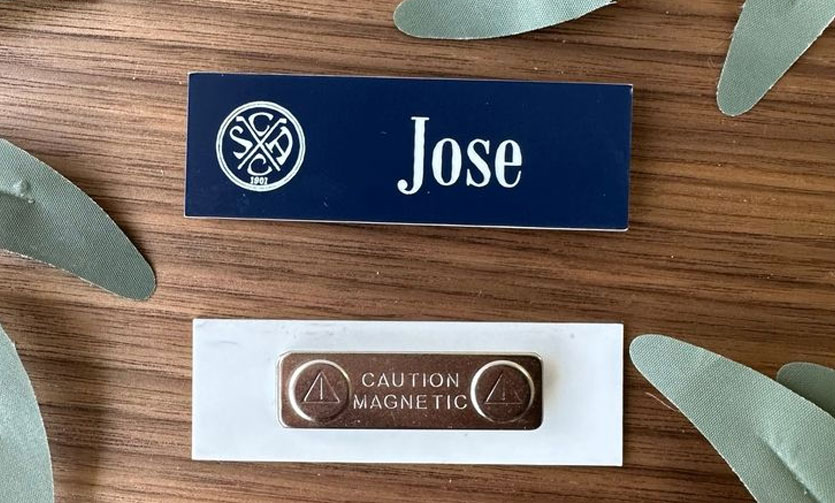What is a Name Badge?
A name badge is a small identification card or tag that displays the name, title, and sometimes the company of the wearer. Name badges can be made from different materials, such as plastic, metal, or paper, and can be worn with a clip, lanyard, or magnetic backing.
Importance of Name Badges
Name badges play a crucial role in various settings, including conferences, events, and offices. Here are some reasons why using name badges are important:
- They facilitate introductions and networking.
- They promote a sense of professionalism and trustworthiness.
- They improve security by making it easy to identify authorized personnel.
- They enhance branding efforts by displaying company logos and colors.
- They help with accountability and tracking attendance.
Types of Name Badges
There are several types of name badges available, each with its own advantages and disadvantages. Here are some of the most common types of name badges:
Plastic Name Badges: These are the most popular type of name badge and are often used in offices and events. They are affordable, durable, and customizable. Plastic name badges can be printed in full-color and can be customized with a logo, employee name, and job title. They come with different attachment options such as clips, pins, or magnets.
Metal Name Badges: These name badges are often used in upscale events and are known for their durability and professional look. Metal name badges can be engraved with the employee’s name and title or printed with the company logo and name. They are typically made of brass, aluminum, or stainless steel and can be customized with different finishes, such as gold or silver.
Paper Name Badges: These are the most affordable type of name badge and are often used in short-term events. They are disposable and easy to customize. Paper name badges can be printed on a standard printer and are available in different sizes and shapes. They typically come with adhesive backing or a clip attachment.
Magnetic Name Badges: These name badges use magnets instead of clips or lanyards to hold them in place. They are easy to use and don’t damage clothing. Magnetic name badges are available in plastic or metal and can be customized with full-color printing or engraving.
Reusable Name Badges: These are environmentally friendly name badges that can be used multiple times. They are customizable and come in different materials, such as plastic or metal. Reusable name badges typically have a slot where a printable insert can be inserted with the employee’s name, job title, and company logo.
Personalized Name Badges: These name badges can be customized with individual names and titles. They are often used in offices and events to promote a sense of professionalism and personalization. Personalized name badges are available in plastic, metal, or magnetic material and can be customized with full-color printing or engraving.
How to Choose the Right Name Badge for Your Needs
Choosing the right name badge for your needs depends on several factors, such as budget, event type, and durability. Here are some steps to follow when choosing the right name badge:
- Determine your budget: Name badges can range from inexpensive paper badges to more expensive metal badges. Determine how much you are willing to spend per badge.
- Consider the event type: For upscale events, metal name badges may be more appropriate, while plastic name badges may be suitable for more casual events.
- Decide on customization options: Determine what information you want on the badge, such as the employee’s name, job title, and company logo. Consider whether you want full-color printing or engraving.
- Choose the attachment option: Name badges can be attached with a clip, lanyard, or magnetic backing. Consider which option is the most comfortable and convenient for your employees or attendees.
- Evaluate durability: Determine how long the badge needs to last. If it’s a short-term event, paper badges may suffice, but for long-term use, plastic or metal badges may be more appropriate.
How to Design and Print Name Badges
Designing and printing name badges are easy with the right tools and software. Here are some steps to follow:
- Choose design software: Popular design software for creating name badges include Adobe Illustrator, Canvas, and Microsoft Word.
- Create the design: Add the employee’s name, job title, and company logo to the badge. Customize the design with colors and fonts that match the branding.
- Print the badges: Use a high-quality printer and cardstock paper or plastic sheets to print the name badges. Make sure the printer settings are set to the correct paper size and quality.
- Cut the badges: Use a paper cutter or scissors to cut out the badges. Make sure to cut along the edges of the design to avoid any white space.
Best Practices for Using Name Badges
Using name badges effectively is crucial for achieving their intended purpose. Here are some best practices for using name badges:
- Wear the badge at all times: Make sure employees or attendees wear their name badge at all times during the event or workday.
- Make the font size legible: The font size should be big enough to be read from a distance. Use a font size of at least 12 points.
- Include essential information: Name badges should include the employee’s name, job title, and company logo at a minimum. Additional information, such as a QR code or a personalized message, can be added.
- Use high-quality materials: Choose durable materials that can withstand wear and tear. Consider the environment in which the name badges will be used and choose materials accordingly.
- Train employees on proper use: Make sure employees are trained on how to properly wear and use their name badges. This includes where to place the badge, how to attach it, and how to properly handle it.
Conclusion
In conclusion, name badges are a small but essential part of various settings, such as conferences, events, and offices. Choosing the right type of name badge and designing it effectively can help promote a sense of professionalism, improve communication, and enhance networking opportunities. By following the best practices for using name badges, you can ensure that they serve their intended purpose effectively. Remember to prioritize legibility, durability, and essential information when designing and using name badges.







